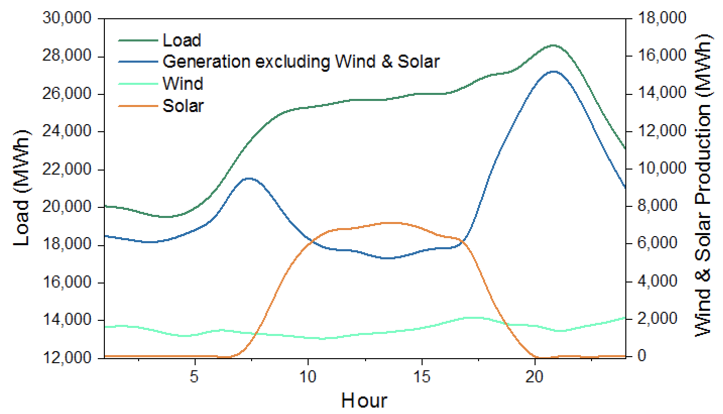Overview
Source: blog.gridplus.io
ConsenSys has been in the energy game for a long time and we’ve worked on a number of projects over the past couple of years (transactive grid, co-tricity, and a few others we can’t publicize yet due to NDAs). For the last nine months we have been hard at work [semi-secretly] developing a system that we believe will revolutionize the way energy markets operate. We are creating Grid+: a distributed electricity provider and market with registration and payments built on the public Ethereum network. Registered customers may use our network to settle payments in real time, significantly reducing both risk and administrative costs by pushing user agency to the edges, where we believe it belongs. And the best part: our network can be built as a layer above the existing grid.
We are currently developing a more efficient electricity provider and we would like to take this time to to introduce ourselves and share our longer term vision for the future of energy markets. As it stands, that future needs more batteries.

Why do we need batteries?
Photovoltaic (PV) cells are being installed in record numbers (PVs work fine without a battery), largely as a result of plummeting costs. We believe distributed solar generation will soon be the most cost effective means of electrical generation in many locations around the world. The main reason for this expectation is that non-trivial amounts of energy are lost during long distance transmission. Approximately 38% of your electricity cost pays for transmission infrastructure and losses during transmission. Moving power from your roof to your refrigerator is significantly more efficient than pulling it in from the power plant 150 miles away. So while there is a significant up-front capital investment to implement PVs, they pay for themselves over time.
While we welcome more renewable energy sources, the unfortunate reality is that high PV penetration can create problems for the electrical grid. Consider the following time series plot of California’s electrical load on April 17th, 2017:

You’ll notice that California has been fairly successful at adding renewables. However, something looks off here. There are a few important details to consider:
- Although wind power is relatively uniform in the 24 hours shown, it can suffer from high variability on any given day, which must be compensated for by the other generators on the grid.
- Solar is (obviously) only present during the day. However, this chart shows an average distribution throughout the 24 hour window. In reality, the supply of solar power in any given location can be intermittent due to cloud cover. These momentary lapses in generation result in massive stress and technical challenges which must be compensated for by other grid participants.
- When the sun sets and the solar production wanes, carbon-based power plants need to ramp up by ~50% and they are expected to do so quickly, as end users have grown accustomed to limitless energy on demand. This is expensive and difficult; it results in a massive waste of energy.
- Stacking PVs onto the grid is only useful until the generation meets the load. Past that, we don’t want more solar because that will introduce overvoltage into the grid, which is an entirely different problem. At this point, grid participants need to siphon away energy or risk damaging the grid infrastructure.
So why can’t we use batteries to store solar energy? This would fix lapses in generation because rational participants would sell power during times of low supply (and high price). The net result would be a flattening of supply over the day and and mitigation of interruptions inherent to solar generation. Unfortunately, it turns out that batteries have not caught up with PV penetration because most markets are not yet ready for them.
Inefficient markets
Unfortunately, customers in most places have no incentive to store power. Why, you ask? Because grids aren’t that smart yet. They will buy power back at exactly the same price that they sell it to you. And this is always the same price (in most regions), 24/7/365. So why would you spend $5000 on a battery to store energy for later when you always get the same price on that energy? A rational market participant wouldn’t.
Fortunately, grids are aware of this and they have been quietly adding the necessary infrastructure to make efficient markets a reality. Do you have something called a “smart meter” in your home? Great! Just wait for your utility to introduce “time of use pricing” (exactly what it sounds like) and you can trade energy on our system. Realistically, we expect this pricing model to slowly permeate into progressive municipalities over the next few years and then take off worldwide thereafter. We are truly at the inflection point of a global grid transition because utilities simply cannot go on with the solar penetration increasing at its current rate. Furthermore, nearly every utility we’ve talked to over the past year has money allocated innovation budgets to tackle this exact issue.

The Smart Battery Swarm
Our system works by networking smart batteries together as independent actors on the grid — more broadly we think of these actors as “agents” (which don’t have to be batteries), but let’s focus on batteries for now. The network is functionally the same with two batteries or two million batteries (currently we have four networked batteries in a pilot) and it is important to note that we are designing this to use existing grid infrastructure. While microgrids are nice to talk about, we believe we can squeeze quite a bit of efficiency out of the existing wires by designing a more efficient accounting system.
This lends itself nicely to those efficient markets discussed earlier. If the grid has too much energy, you would expect prices to be low. Batteries would naturally charge up on the cheap energy and wait until prices rose to sell it. With many actors on the system, one would expect a significant smoothing of the grid load, leveling out aggregate load over the day and keeping the grid operating within a safe range.
Developing a Grid+ roadmap
For various reasons, we have only just recently begun to speak publicly about Grid+. Here is a talk I recently gave at Rice University about our current technical architecture.
Although we have focused on the final system in this article, Grid+ will take several steps to get there. We have a longer roadmap that we believe is necessary to bring Ethereum into the world of energy providers and we plan to reveal that roadmap over the coming months. We would like to show our community that the public Ethereum network is going to permeate industries yet unseen and that it will happen sooner than some may think. We believe Grid+ will be one of the first companies to bring Ethereum into the physical world and we are very excited for the journey.
Our team
There is a fairly large group of ConsenSys members working on energy projects, but a few of us are dedicated to Grid+ in particular.
Alex Miller is a software engineer with a background in applied physics. He found out about Ethereum in 2015 when he was working for a fintech startup that moved ~$2 payments between users with traditional payments infrastructure. He left that world for the greener pastures of permissionless innovation and today leads technical development of energy projects at ConsenSys.
Karl Kreder recently graduated from The University of Texas at Austin, where he received his PhD in Materials Science researching advanced battery technologies. Prior to getting his PhD, Karl worked at Southwest Research Institute where he started the Energy Storage System Evaluation and Safety consortium which performed testing, characterization, and research on large format lithium ion batteries for >10 kWh energy storage.
Mark D’Agostino is a managing partner in the Enterprise group at ConsenSys. He has delivered Ethereum based solutions to Fortune 500s and governments around the world. Mark helps drive strategy and business development for Grid+.
Map
Visited 3454 times, 2 Visits today








